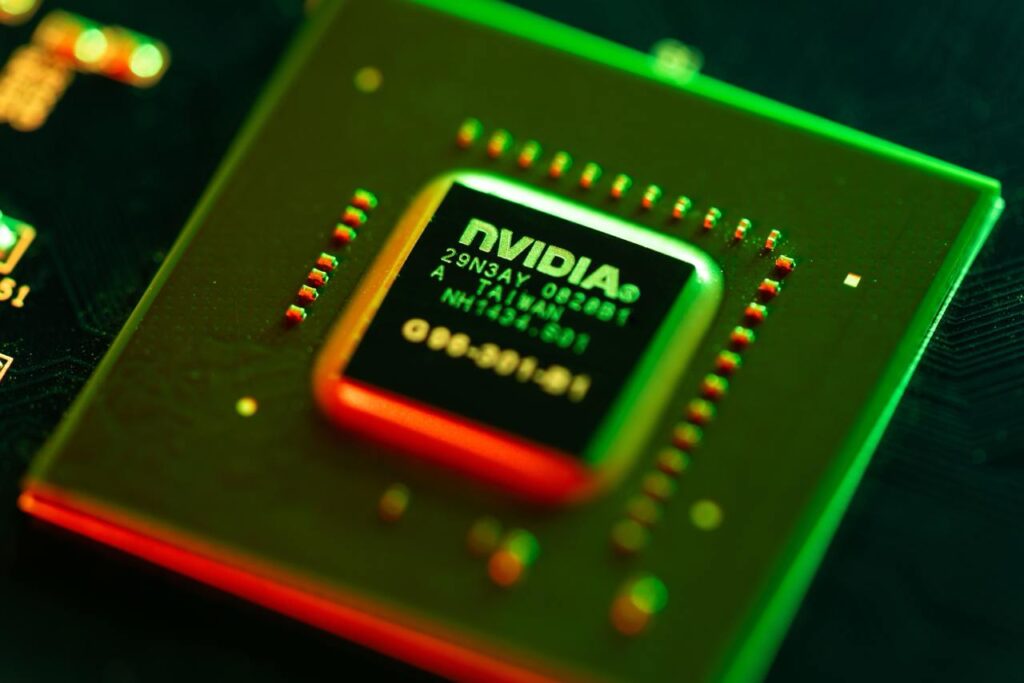Nvidia’s (NASDAQ: NVDA) product lineup, especially the next-generation Blackwell chip, continues to influence analysts’ decisions about the company’s future stock price.
The most recent analysts’ estimate emerged from Morgan Stanley’s Joseph Moore, who, in an investor note on October 10, reiterated his ‘Overweight’ rating on the stock, citing the chipmaker’s robust business outlook and the successful ramp-up of its Blackwell chips.
Moore set a price target of $150 in this note, highlighting the strong momentum behind the Blackwell ramp, a critical focal point for the company’s forward visibility.
He emphasized that despite initial yield issues with the first version of Blackwell silicon, the company has successfully resolved these challenges.
“In the shorter term, the Blackwell ramp appears to be quite strong, with no major changes to the roadmaps and every indication that business remains robust with very high forward visibility, in line with all of our checks,” the expert said.
Blackwell’s previous constraints solved
Moore explained that the yield problems were primarily identified post-packaging, meaning that defective chips resulted in the loss of crucial materials like CoWoS (Chip-on-Wafer-on-Substrate) and HBM3e (High Bandwidth Memory).
These supply constraints initially created some headwinds, but Moore assured investors that the issues are now behind Nvidia, paving the way for solid production going forward.
He also mentioned that today’s new Blackwell orders would not be shipped until late next year, as the company’s production has already been booked for roughly 12 months.
While Moore did not provide updated revenue or margin estimates, Nvidia’s high confidence in its earlier guidance of ‘several billion in Blackwell revenue’ for the January quarter bodes well for sustained growth.
This outlook is backed by Nvidia CEO Jensen Huang, who noted that demand for the chips has hit ‘insane’ levels, creating customer tensions and concerns about the semiconductor giant’s ability to deliver.
Generally, the Blackwell chips are projected to be a major cash cow for the company, given their role in the growing artificial intelligence (AI) scene.
In this regard, Finbold reported that Todd Gordon, founder of Inside Edge Capital and portfolio manager, noted that the chip rollout would likely see Nvidia hit revenues of $32.9 billion, $36.5 billion, $39.5 billion, and $42.9 billion over the coming years. Gordon remained optimistic that there is room for an upward revision in revenue targets while setting a price of $285 for 2025.
On the same front, Phil Panaro, a former senior advisor at the Boston Consulting Group, pointed out that Blackwell sales could elevate Nvidia’s stock price to $800 by 2030, with massive revenue of $600 billion by the same year.
NVDA stock technical outlook
Meanwhile, stock trading expert Peter DiCarlo, in an X post on October 10, said that despite Nvidia experiencing short-term volatility, the equity remains primed to hit the $150 mark.
DiCarlo observed that Nvidia has been breaking higher highs, a bullish sign, even though the stock has not yet confirmed a sustained breakout.
He stressed that investors should closely monitor crucial support levels, expecting a pullback to around $128 or $124 before another potential upward move.
As of the latest update, Nvidia was trading at $132, with weekly gains of over 7%.
In summary, Nvidia’s next-generation Blackwell chips are driving optimism around Nvidia. Still, investors need to remain focused on key support levels as the company capitalizes on the growing momentum of the AI revolution.









